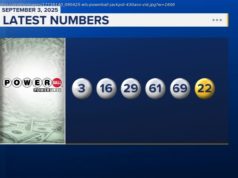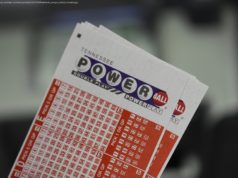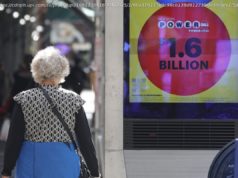An uncompromising artist, Mr. Taylor argued against reductive definitions of what a musician of his training and background could or should do.
Cecil Taylor, a pianist who challenged the jazz tradition that produced him and became one of the most bracing, rhapsodic, abstract and original improvisers of his time, died on Thursday at his home in Brooklyn. He was 89.
His death was confirmed by his legal guardian, Adam C. Wilner. No cause was given.
Mr. Taylor wrote music, led bands and for decades worked, as many jazz musicians do, in nightclubs and at festivals. But from early on he seemed to have much greater goals.
He was a supreme example of an uncompromising artist, arguing — mainly through his work, but in principled and prickly interviews as well — against reductive definitions of what a musician of his training and background could or should do.
For Mr. Taylor, a small and vigorous man who in his prime wore athletic clothing onstage — as if to confirm the notion that the audience was watching a physical workout — albums weren’t merely recording sessions and performances weren’t merely gigs.
At the center of his art was that dazzling physicality and the percussiveness of his playing — his deep, serene, Ellingtonian chords and hummingbird attacks above middle C — which held true well into his 80s.
But in concert he also recited his own poems, whose enjambed lines might describe Aztec architecture, paleoanthropology, crocodile reproduction or a woman’s posture. His motions around the instrument and the bandstand were a part of his performance too.
In his system of writing music, working with bands and performing, he was concerned with what he called, in a 1971 interview with the writer Robert Levin, “black methodology”: oral traditions, music as embodied celebration and spiritual homage.
Classically trained, he valued European music for what he called its qualities of “construction” — form, timbre, tone color — and incorporated them into his own aesthetic.
“I am not afraid of European influences,” he told the critic Nat Hentoff. “The point is to use them, as Ellington did, as part of my life as an American Negro.”
In a long assessment of Mr. Taylor’s work — one of the first — from “Four Lives in the Bebop Business,” a collection of essays on jazz musicians published in 1966, the poet and critic A. B. Spellman wrote:
“There is only one musician who has, by general agreement even among those who have disliked his music, been able to incorporate all that he wants to take from classical and modern Western composition into his own distinctly individual kind of blues without in the least compromising those blues, and that is Cecil Taylor, a kind of Bartok in reverse.”
Because his fully formed work was not folkish or pop-oriented, did not swing consistently (often it did not swing at all) and never entered the consensual jazz repertoire, Mr. Taylor could be understood to occupy an isolated place. Even after he was rewarded and lionized — he was given a Guggenheim fellowship in 1973, a National Endowment for the Arts Jazz Masters award in 1990, a MacArthur fellowship in 1991 and the Kyoto Prize in 2014 — his music was not easy to quantify.
If improvisation means using intuition and risk in the present moment, there have been few musicians who took that challenge more seriously than Mr. Taylor. If one of his phrases seemed of paramount importance, another such phrase generally arrived right behind it. The range of expression in his keyboard touch encompassed caresses, rumbles and crashes.
He was capable of performances full of stillness and awe, suggesting a kind of physical movement through musical phrases, as on the unaccompanied “Pemmican” (from the 1981 live recording “Garden”). Or he could go on full attack, as on “Taht” from the 1984 album “Winged Serpent (Sliding Quadrants)” — his fingers hammering and flying across the keys and breaking through the sound of a polytonal, polyrhythmic 11-piece band.
Some of his greatest musical relationships were with drummers, among them Max Roach, Elvin Jones, Sunny Murray and Ronald Shannon Jackson.
Cecil Percival Taylor was born in Long Island City, Queens, on March 25,1929, and grew up about four miles away, in Corona. His father, Percy, originally from North Carolina, was a chef for Dr. John Kindred, president of the River Crest Sanitarium in Corona. Growing up, Cecil revered his mother, the former Almeida Ragland, for her learning and her high standards. She spoke French and German, took him to see Bill Bojangles Robinson and Ella Fitzgerald, and suggested that he read Schopenhauer.
Acknowledging his desire to become a musician, rather than pursuing one of the careers she preferred for him — doctor, lawyer or dentist — his mother insisted that he practice the piano six days a week, then do what he wanted on Sunday. “That’s when the organization of my music began, when she wasn’t looking,” Mr. Taylor said in an interview in the literary journal Hambone.
She died of cancer when he was 14.
Mr. Taylor studied piano at the New York College of Music in Manhattan and, in the early 1950s, moved to Boston, where he had relatives, to attend the New England Conservatory.
While studying piano, arranging, harmony and solfège notation there, he started going to jazz clubs, which he said helped him develop ideas about his music more than anything he learned in school. He prized Ellington for his orchestral approach to the piano and Horace Silver for his rough, vernacular energy; he saw Charlie Parker, Bud Powell, Sarah Vaughan and the relatively little-known pianist Dick Twardzik, all of whom would contribute to his conception of music, as did Stravinsky did.
(The answer to the question of what music gave rise to Mr. Taylor, and what he liked to listen to, would encompass all those names as well as Marvin Gaye, Gyorgi Ligeti, Betty Carter, Judy Garland and Thelonious Monk. The Spanish architect Santiago Calatrava and the flamenco dancer Carmen Amaya had also influenced him to think about structure, movement and time, he said.)
Back in New York,Mr. Taylor formed groups with the vibraphonist Earl Griffith and the soprano saxophonist Steve Lacy. In 1956, with a quartet rounded out by Mr. Lacy, the bassist Buell Niedlinger (who died on March 16) and the drummer Denis Charles, he made his first album, “Jazz Advance.” Featuring standards as well as his own compositions, it was produced by Tom Wilson, who later worked with Bob Dylan, the Mothers of Invention and the Velvet Underground.
The quartet played at the Newport Jazz Festival the next year, a performance released by Verve Records as one side of an album. (The other side featured a group led by the alto saxophonist Gigi Gryce and the trumpeter Donald Byrd.)
Mr. Taylor’s music at that time was steadily swinging and fit recognizably within the modern jazz idiom — its spiky phrases had a clear connection to Monk’s — but it was also already moving beyond it. “Tune 2,” for example, from the Newport record, had an 88-bar form, a long way from the 32-bar song structure more commonly used in jazz.
He went further in that direction on the 1958 record “Looking Ahead!,” then recorded a session, originally issued as “Hard Driving Jazz,” with an ad hoc group, put together by Mr. Wilson, that included John Coltrane.
With renown came a particular kind of scrutiny. In 1959, Gunther Schuller devoted a long essay in The Jazz Review to the question of whether Mr. Taylor’s music was atonal.
“Listening carefully to his playing leaves no doubt of the fact that Taylor indeed does think tonally, but the result of his thinking most of the time cannot be analyzed on tonal terms,” he wrote.
Whitney Balliett of The New Yorker described a crowd reacting to Mr. Taylor’s performance at the Great South Bay Jazz Festival on Long Island in 1958: A few were mesmerized, he wrote, while others “fidgeted, whispered and wandered nervously in and out of the tent, as if the ground beneath had suddenly become unbearably hot.”
By 1961, given the chance to contribute half the music on an album under the arranger Gil Evans’s name (the other half showcased the composer Johnny Carisi), Mr. Taylor played only original music: striking pieces with shifting tempos and splintering melodic lines.






